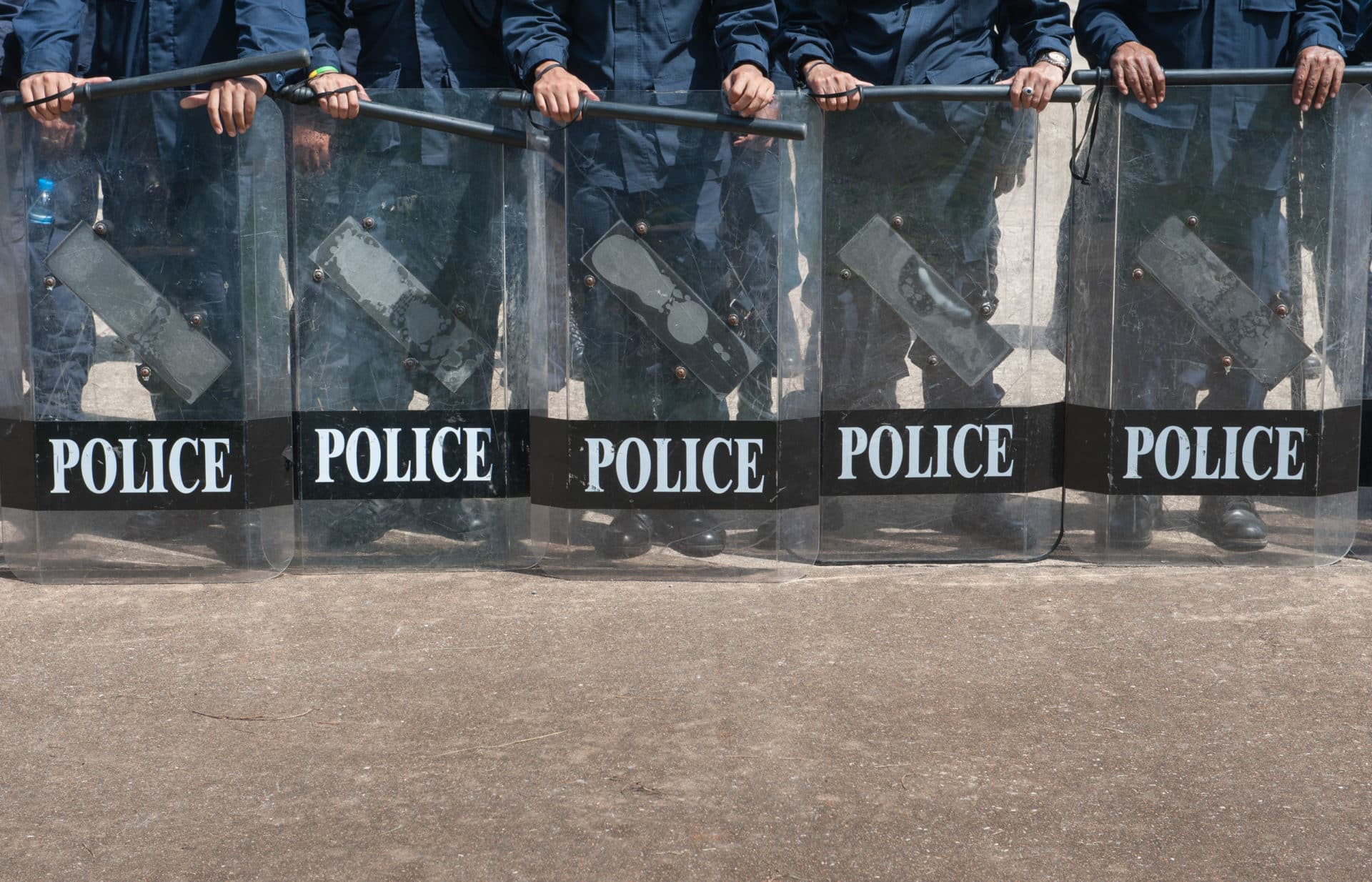
The weekend of the Inauguration was anything but quiet.
While there were no arrests made during the worldwide Women’s March, Inauguration Day protests did not go quite as smoothly. You have probably seen videos of violence from both protesters and police. Throughout the afternoon, there were small pockets of protesters responsible for smashing the windows of large banks, and some protesters also reportedly threw rocks and bricks at officers.
All told, over 200 people were arrested on Inauguration Day for protesting. Most were charged for felony rioting. Here in New York, seven people were arrested after blocking the sidewalk around Trump Tower.
Arresting people was just one of the ways that the police responded, though. Cops also threw flash grenades into the crowd and used pepper spray on protesters. In one video that has circulated on social media, the police sprayed pepper spray mere feet away from an elderly woman who was bent over while multiple people rushed to her aid. Videos from NPR also show police spraying crowds of people who are fleeing from them.
Pepper spray and other forms of violence are meant to be used in self-defense. So when are police crossing the line? When are they engaging in police brutality?
What Is Considered Police Brutality?
If you’ve been paying attention to the news during the past two or so years, you know that police brutality is certainly not a new issue, nor is it an issue that is limited to Inauguration Day protests (or protests at all, for that matter).
Law enforcement officers are trained to handle specific situations, including arrests and crowd control, with a certain amount of force. However, when they use more force than is necessary, it is considered police brutality.
Police brutality comes in many forms: examples include the police officer in Texas who pulled his gun on teenagers and tackled a young girl in a bikini while breaking up a pool party and the officer that shot and killed Philando Castile after pulling him over for a broken tail light.
Quite simply, police brutality is when officers overstep the power that they have been given to keep the peace. It is a form of negligence. Police, however, are not above the law. They can be held accountable for their actions and receive penalties for using excessive force and brutality against citizens.
Suing for Police Brutality
Police brutality not only causes injuries – or worse – it can also lead to a false or unlawful arrest or imprisonment. Just like with any injury caused by negligence, you can file a lawsuit in court for damages related to false arrest or imprisonment or excessive force.
Before your file a lawsuit, consider the following factors in your case:
- Why Were You Arrested? Protests are usually peaceful, but there are cases where protesters get out of hand and use violence to get their message across. Arresting only the violent protesters isn’t always easy in the heat of the moment. If police can show that there was a reason for them to use the level of force they did, it may be difficult to win your claim.
- What Force Was Being Used By Police, Or By You? If you were using force against the police, they have the right to use appropriate force to arrest and detain you. If you are cooperating, the police should not be using force. Resisting arrest is illegal, but resisting an unlawful arrest is legal.
- What Losses or Damages Resulted From the False Arrest/Excessive Force? When you are filing a lawsuit, you will need to file for specific damages that were accrued, including medical bills for injuries, loss of earnings, and so on.
Taking action against the police is complicated and can be intimidating. Even with video evidence, law enforcement officials have a lot of power to fight against police brutality charges. If you are thinking about filing a police brutality case, be sure to contact an experienced New York personal injury lawyer.









